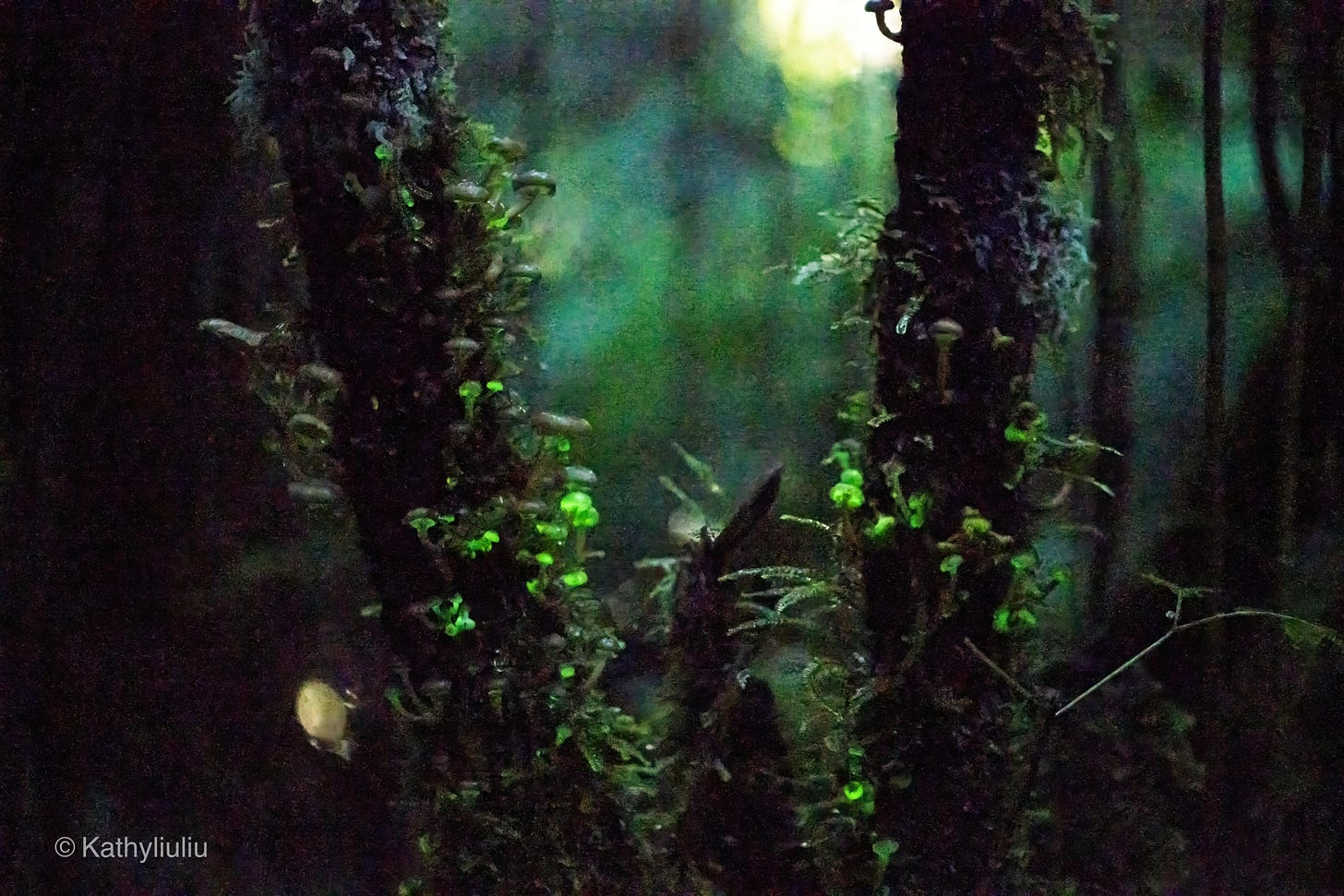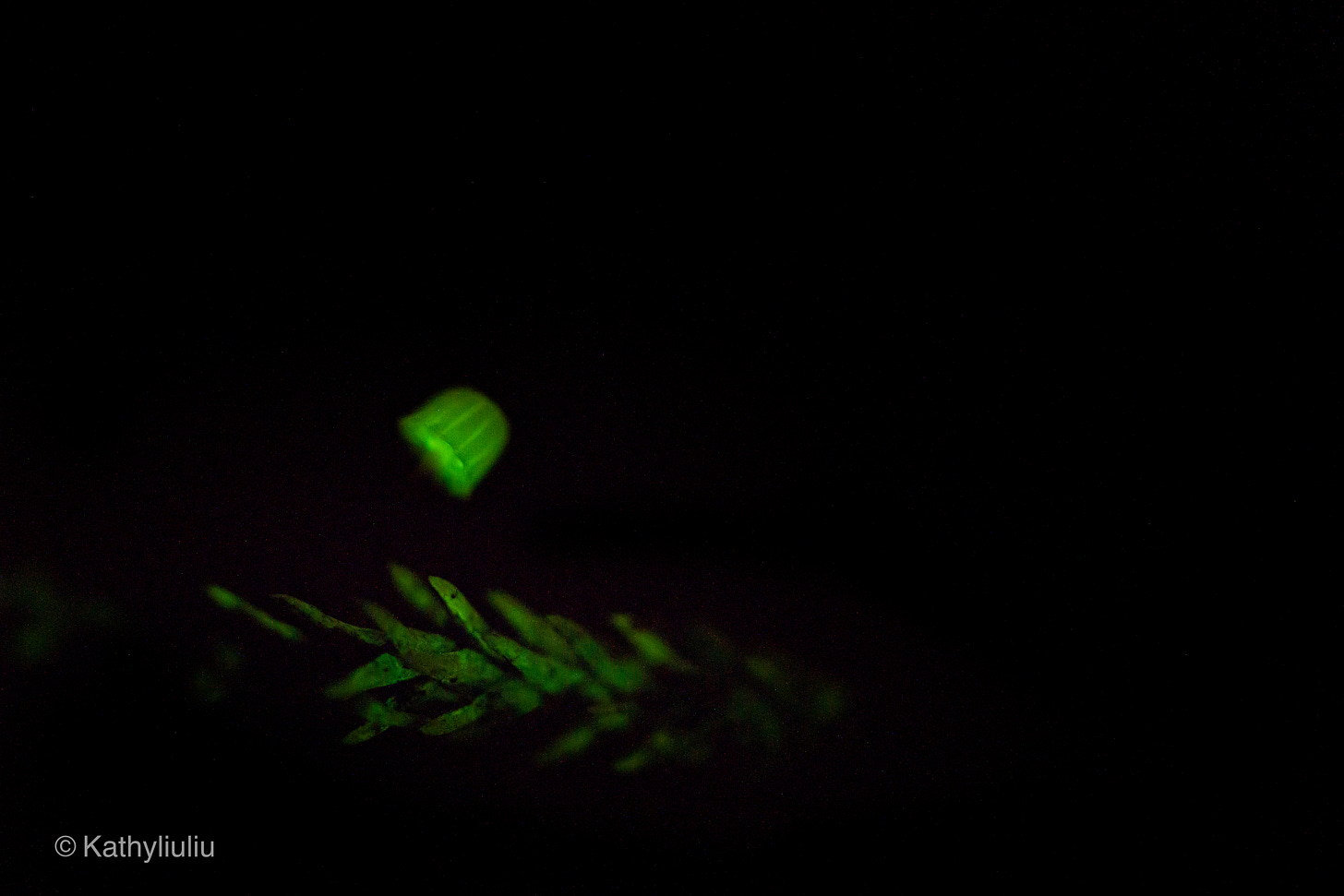Glowing Discoveries: One Photographer's Journey into the World of Bioluminescent Mushrooms
Delve into the world of Liu Yang, a passionate photographer based in New Zealand who uncovers the mysteries of bioluminescent fungi.
I first met Liu (virtually) when she mentioned she’d come across an old blog post of mine about how to shoot bioluminescent mushroom species.
It’s been over a year since, and we’ve remained in touch - exchanging photography tips and tricks, and discussing all things fungi.
She has recently discovered through long-exposure night photography a couple of unrecorded species not previously known to glow.
I got the chance to interview her this past week, and she shares her experiences, challenges, and the joy she finds in nature's hidden gems.

Can you tell us a bit about your background and how you became interested in mycology and mushroom hunting?
My background is in tourism, and I enjoy traveling. In China, I worked in media, including for a geographical magazine and a tourism weekly newspaper. After moving to New Zealand, I began studying professional photography.
I have always been curious about the world, and the diverse shapes and fleeting existence of mushrooms fascinated me. The fact that there are so many undiscovered mushrooms in the world is also very attractive to me.

Currently, I live in Fox Glacier, where there is a temperate rainforest that has existed for tens of thousands of years.
In this forest, I have encountered at least a hundred different types of mushrooms. It is easy to find mushrooms during the mushroom season without having to trek through difficult terrain, which is important to me.
What first sparked your interest in bioluminescent mushrooms, and how did you come across the new species you recently found?
I first learned about bioluminescent mushrooms in New Zealand on your website, and I had never photographed them before, so I thought they were very mysterious. I carefully read your articles multiple times and learned about how to test if a mushroom can glow and photographic techniques from your website. I am very grateful for all the knowledge I gained.


I happened to discover two types of bioluminescent mushrooms last year while taking nighttime photos at Lake Matheson. They both grew on the same dead conifer tree. I felt very lucky to have photographed them.
Especially the first time I saw them, I was dancing with joy in the forest by myself, feeling that nature was truly magical. The wonderful connection with nature fascinated me.
Can you describe the unique characteristics of these new bioluminescent species? Are there any particular features that set them apart from other known species?
The first species I found was identified as Mycena sp. ‘Erua’ by Dr. Jerry Cooper, a mycologist at the University of Auckland, and with the help of RNZ journalist Anna Chin.

It is very small, about 1-2 millimeters in size. Scientists already knew about this species, but they did not know that it glowed. So, I may be the first photographer to capture this species glowing. This makes me very excited.




The second species of mushroom has not yet been identified. It is also very small, about 1-4 centimeters in size, and is overall grayish-white in color. It also belongs to Genus Mycena.
The one I found this year is very similar to the one I found last year, but there are some slight differences, so I am not sure if they are the same species. However, this mushroom also grows on specific conifer trees.
Besides the mushroom glowing, the tree trunk and needles where it grows also glow, so it is likely due to the mycelium.


What was your reaction when you realized you had discovered new bioluminescent mushroom species? How did you go about confirming their novelty?
When I first saw it, I thought my camera was broken. I tried several times to capture a small dot of light in the dark before realizing that it was coming from a very small mushroom. I was very happy and excited.
The second species has not yet been formally identified, but I am in the process of submitting it for identification to experts in the field.
The first thing that came to my mind was to share it with you, haha. I was even more excited when you said it could be a new species. There was also no record of it on iNaturalist.

What are some challenges you've faced when photographing mushrooms, especially bioluminescent ones?
One of the biggest challenges I face when photographing mushrooms, especially bioluminescent ones, is my own fear when alone in the forest at night. It's not so much a technical challenge as it is a personal one.
Sometimes, while waiting for the camera to take a long exposure shot in the darkness, I'll hear a possum walking through the leaves, making noise and getting closer and closer to me, and I feel like screaming.

Do you have any tips for capturing the best shots?
It really comes down to trial and error because it's difficult to find bioluminescent mushrooms in the first place. Having some mycological knowledge can help to find them during the day and then photograph them at night.
What equipment and settings do you typically use when photographing mushrooms, both bioluminescent and non-bioluminescent species?
In terms of equipment, I use a Nikon D850 with a Nikon 105mm 2.8 macro lens. During the day, I try to use natural light and then stack shots with a big aperture.

Since each mushroom has a unique growing environment, different techniques may be required. If I use flash, I'll also bring a diffuser. I'm still learning and experimenting as a beginner myself.
How has your passion for mycology influenced your photography and vice versa? Do you find that one enhances the other?
I think they complement each other.
Through a lot of macro photography, my shooting skills and knowledge have improved, and these new skills can also be applied to the usual landscape photography that I also enjoy. For example, taking panoramic photos would be easier.
What advice would you give to those who are new to mushroom hunting or interested in exploring the world of mycology?
Stay curious, stay passionate. That's the most important thing; other things like photography skills are secondary.

Can you share any memorable experiences or encounters you've had while hunting for mushrooms? What keeps you coming back to this hobby?
I once found a rare species of mushroom that was on the IUCN Red List of endangered fungus species in my area. It was an incredible feeling of discovery and excitement.
That's what keeps me coming back - the thrill of the hunt and the possibility of finding something new and exciting.
The most memorable one would be a photo that won many awards last year. When the mushroom spores were dispersed, a gust of natural wind blew, forming a small tornado of spores. It was very magical.


I stayed with this mushroom in the forest for two days to take the photo, but I couldn't capture the same scene again. It was a once-in-a-lifetime lucky experience.
I joined some Facebook groups because I saw many mushrooms that I had never seen before and wanted to photograph them myself.
However, I think the more important thing is that discovering mushrooms, encountering them, and photographing them has given me a sense of healing from nature, and this process makes me very happy.
It's like going back to childhood, being able to explore freely in nature, and because photography requires concentration and focus, it can also help people forget their worries.

I think most mushrooms are very cute, and just seeing them can make me very happy.
Liu's journey into the world of mycology and photography showcases the remarkable beauty and diversity of fungi, especially the elusive bioluminescent mushrooms.
Her passion and dedication serve as an inspiration for others to embark on their own explorations and appreciate the wonders of nature. As we delve deeper into this captivating realm, we are reminded of the endless possibilities that await us when we stay curious and passionate about uncovering the hidden gems that nature has to offer.
To see more of Liu’s work, you can find her on Instagram @kathyliuliu


